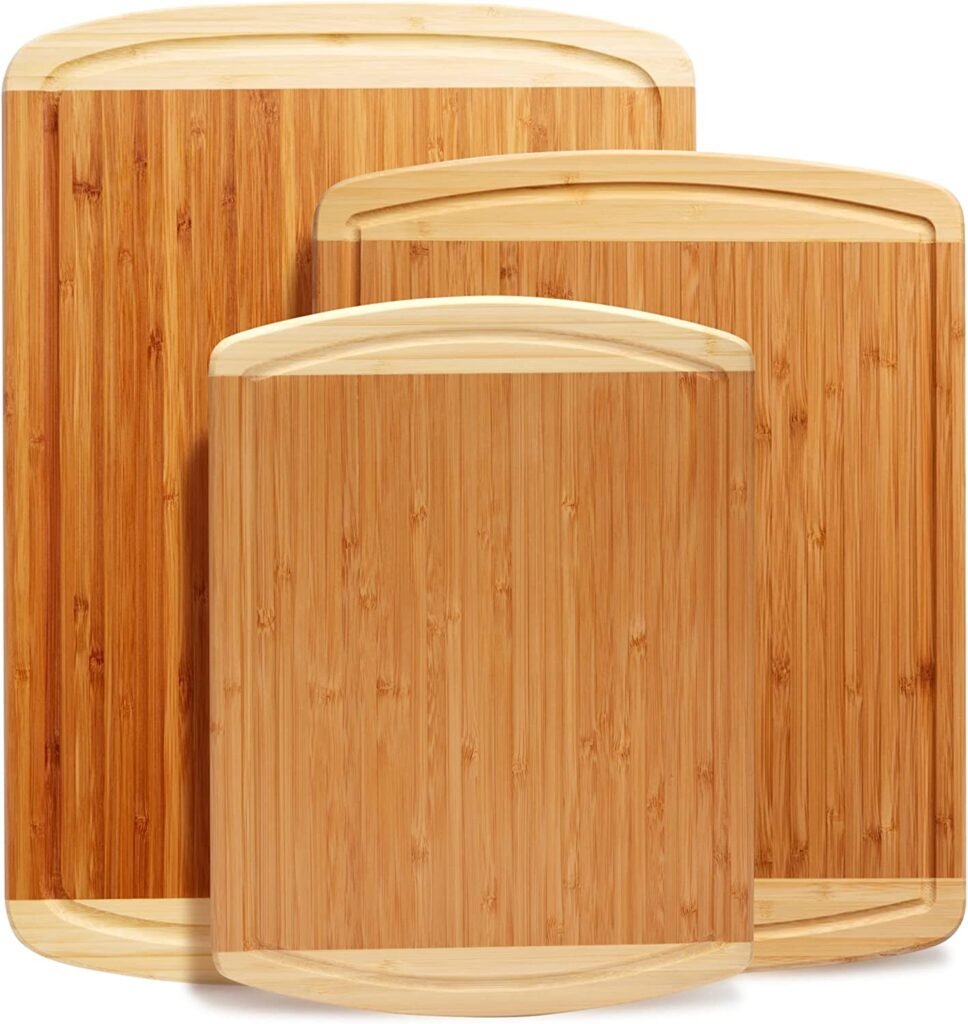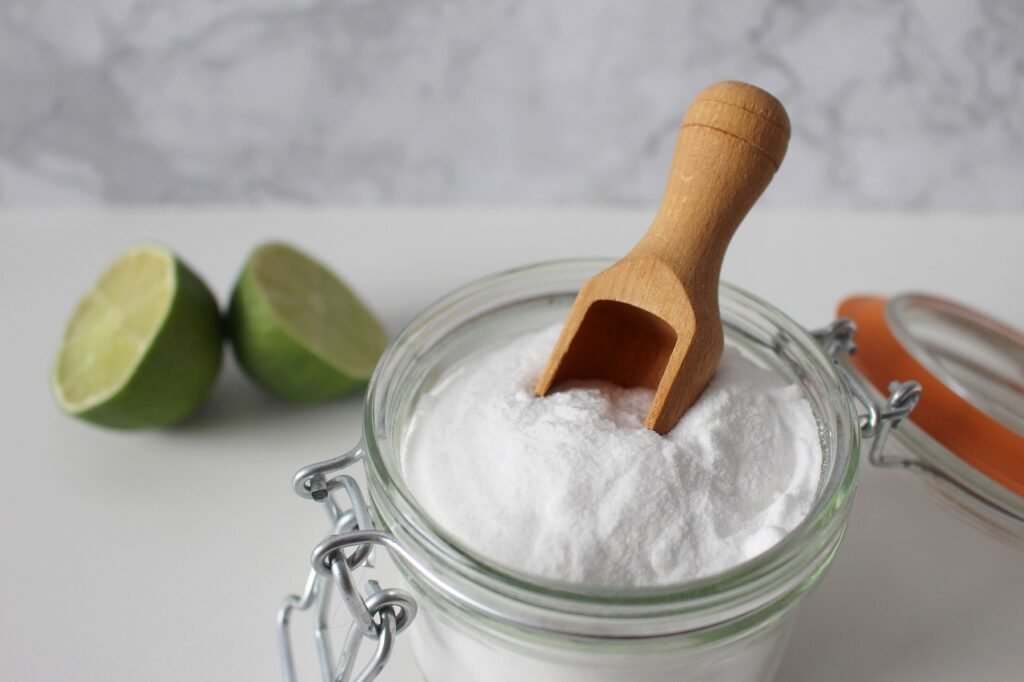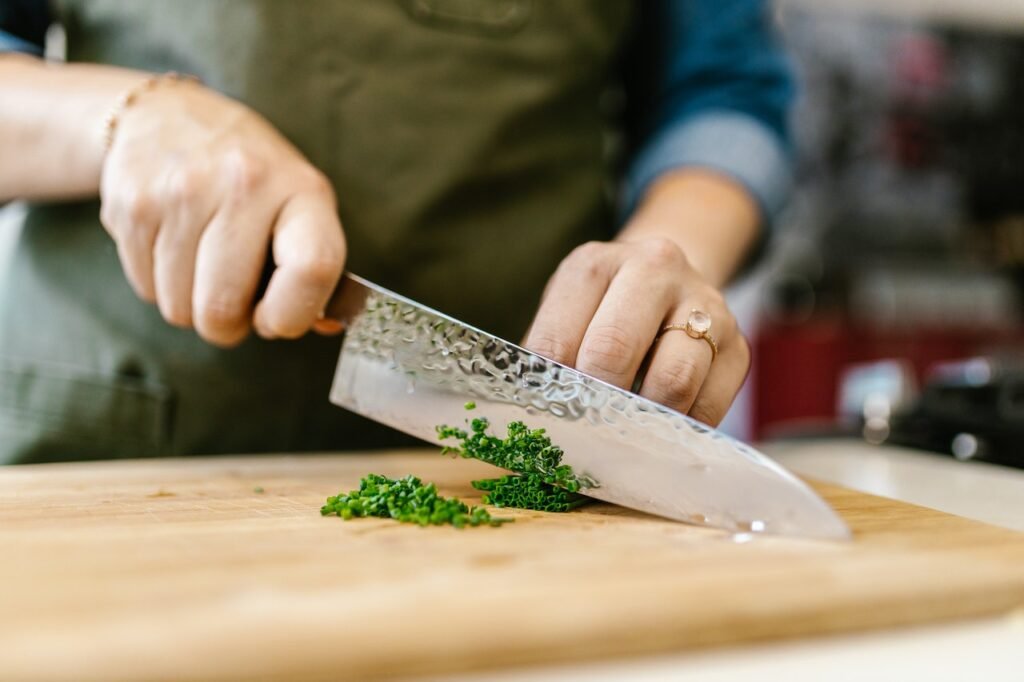Care Tips: How To Maintain Bamboo Cutting Board
1Shares
How to maintain bamboo cutting board is an important part of kitchen safety. Given its durability and sustainability, bamboo cutting boards are now a preferred option for many home cooks. Compared to conventional wood cutting boards, they are less likely to acquire deep scratches and grooves that could store bacteria.
Yet in order to maintain its quality and guarantee food safety, bamboo cutting boards need to be properly maintained, just like any other kitchen equipment. In this article, we’ll go over some maintenance advice for bamboo cutting boards, So y our bamboo cutting board may last for years and remain an useful kitchen tool with the proper care.
Why Choose a Bamboo Cutting Board?

Before we dive into how to maintain bamboo cutting board, let’s discuss why you should choose one in the first place.
➔Durability and Strength
Bamboo is one of the strongest natural materials on Earth. It’s three times harder than maple wood, making it resistant to scratches and scrapes. This makes bamboo cutting boards ideal for use in busy family kitchens or professional restaurants where they will be used regularly and frequently.
The strength of bamboo also means that it won’t absorb moisture or odors like other materials like plastic or wood, making it easier to clean and maintain over time.
➔Knife Protection
Bamboo has natural fibers that are gentle on knife edges, meaning that your knives will stay sharper longer, saving you money in sharpening costs over time. Bamboo fiber prevents knives from slipping as much as other surfaces, so you can always cut with confidence and safety.
➔Environmentally Friendly
Bamboo is a rapidly renewable resource, making it an environmentally conscious choice when choosing a material for kitchen tools. Unlike other types of wood, bamboo doesn’t require replanting after harvesting because the root system remains intact during harvest, allowing the plant to regrow quickly and easily without any extra effort.
➔Easy To Care For
Bamboo cutting boards don’t require much maintenance since they don’t absorb moisture or odors like other materials. All you need to do is wipe down your board with warm water after every use and air dry it before putting it away for storage. You should never put a bamboo cutting board in the dishwasher since this can cause warping over time.
➔Attractive Design Options
Not only does bamboo offer superior performance over other materials, but it also comes in various styles and designs that look great in any kitchen setting. Whether you prefer classic wooden grain patterns or more modern styles with mosaic tiles or geometric shapes, there’s something to suit everyone’s tastes regarding these beautiful boards.
How to Maintain Bamboo Cutting Board

Now that you’ve had your new bamboo cutting board let’s discuss how to maintain it so it will last for years.
❗Cleaning Bamboo Cutting Board
To ensure your bamboo cutting boards last for years, it’s essential to clean them regularly and properly. Wipe down the board with a damp cloth or paper towel, then follow up by using a food-safe sanitizer or disinfectant spray. Finally, rinse off the board with warm water and dry thoroughly before storing away in a cool area. With these simple steps you’ll have an impeccably kept bamboo cutting board!
In addition to wiping it down after each use, you should also give your bamboo cutting board a deep cleaning once a month. To do this, use a soft brush and natural dish soap to scrub the surface. After it’s been cleaned and rinsed off, be sure to dry with a clean cloth before storing away.
❗Oil Treatment
In order to ensure your bamboo cutting board remains in peak condition and provides you with years of use. It is essential to employ a regular bamboo cutting board oil treatment. Use food-grade mineral oil on the surface of your bamboo cutting board. And then, rub it using a soft, lint-free cloth or paper towel.
Allow the board to absorb the board oil overnight, then apply a second layer the following day. Wait an additional 24 hours before using the board for food prep or display purposes. To maintain this level of protection and improve water resistance, repeat this weekly process for as long as necessary.
❗Storing Bamboo Cutting Board
It is also essential to store your bamboo cutting board correctly. To do this, wrap the board in a damp paper towel or cloth and place it in an open area of your kitchen where there is plenty of air circulation (but not direct sunlight). This will ensure the board doesn’t warp or crack due to improper storage.
By following these simple steps, your bamboo cutting board will remain pristine and provide you with years of use.
Products For Bamboo Cutting Board Care

You don’t need to buy expensive products to care for your bamboo cutting board properly. A few household items can help you keep it in top condition and get the most longevity from your board.
● Mild soap
A mild liquid dish soap, like Dawn or other brands, is perfect for cleaning your board after each use.
● Baking soda
When you need to give your board a deep clean, baking soda is ideal as it won’t damage or corrode the bamboo surface while removing any ground-in food residue.
● Mineral oil
A food-grade mineral oil is the best choice for preserving and protecting your board.
● Soft cloths or paper towels
A soft, lint-free cloth or paper towel is important for cleaning and oiling your bamboo cutting board.
●Cooking oil
If you need to lubricate the board, use light cooking oil occasionally. Never use vegetable or canola oil, as this will go rancid and contaminate your food.
●Beeswax
Beeswax can also be used to help waterproof and protect your board. Just melt the wax and apply it with a lint-free cloth or paper towel.
●Undiluted Bleach
If you need to disinfect your board, use undiluted bleach. Just rinse the board thoroughly with warm water and dry it before using it for food prep or display purposes. The downside is that it can dry out the board over time, so use it sparingly.
●Lemon Juice
If you’re looking for a natural cleaner, lemon juice is an excellent choice. Not only does it smell great, but it can also help to remove stubborn stains from your board.
●Rubbing Alcohol
Another great natural cleaner for your board is rubbing alcohol. It’s perfect for removing stains and sanitizing. Just rinse it off with warm water before using the board again.
Why Is It Crucial to Maintain Bamboo Cutting Boards?

✔️Prevent Splitting and Cracking
Bamboo, while very durable and naturally antibacterial, is susceptible to absorbing moisture quickly, which can eventually weaken the board and lend to unsightly splitting and cracking. To avoid such effects, it is important to clean and oil the cutting board regularly after use. Particularly after contact with any acidic liquids such as vinegar or citrus fruits.
Once cleaned and dried, some top-quality butcher block oil should be applied in a thin layer all over the surface of the board. Doing this routinely will help ensure longevity and better performance of your bamboo cutting board.
✔️Keep It Looking Good
It ensures that the board will maintain its pristine visual appeal. Which may be compromised by food and knife blade scratches over time. Without adequate maintenance, the board may eventually look unsightly and weathered.
✔️Prevent Odors
Bamboo is naturally antimicrobial, but if you do not properly care for your cutting board, it can start to harbor bacteria and other microorganisms that can cause odors. Regular cleaning and oiling will help keep the board fresh and odorless.
✔️To Prevent Stains
Stains can also be problematic with bamboo cutting boards if they are improperly maintained. Food stains can be difficult to remove from bamboo, so cleaning up spills as soon as they happen is essential. Additionally, some kinds of oils can help prevent staining and discoloration. Moreover, when cutting fruit or vegetables that contain natural acids, you should use another side of the board if possible; this will help protect its integrity and maintain its longevity
✔️Keep Your Knife Sharp
Using a dull knife on a hard surface like bamboo can damage the blade or dull it more quickly than using a sharp knife on a softer surface like plastic or wood. A well-maintained cutting board will help keep your knives sharp longer by providing a softer surface to glide across when slicing through food items like meats or vegetables.”
✔️To Prevent Bacteria Growth
If the board is not properly sanitized after each use and regularly wiped down with oil. It can become a breeding ground for bacteria. Neglecting proper maintenance of bamboo cutting boards increases the health risk associated with preparing food. As leaving food residues on the cutting surface can lead to potentially hazardous bacterial growth even though bamboo is nonporous. The best way to ensure safety while preparing meals is by maintaining the cutting board through regular cleaning and preventative oiling.
Frequently Asked Questions
Does Bamboo Cutting Board Need to Be Seasoned?
Yes! Like wooden cutting boards, bamboo cutting boards should be “seasoned” with oil before and every few months after use. This helps protect the surface of the board and prevent cracking or warping. We recommend using mineral oil as it is food-safe and won’t go rancid like other oils. Apply the oil with a soft cloth and wipe away any excess residue.
How Do You Keep A Bamboo Cutting Board From Molding?
Mold can form on wooden or bamboo cutting boards if not properly cared for, so cleaning them thoroughly after each use is essential. Use hot water and soap (or vinegar) to get rid of any bacteria or food particles that may be stuck on the board’s surface. Ensure to dry the board completely after washing it—moisture is one of the main culprits of mold growth.
How Often Should You Oil My Bamboo Cutting Board?
We recommend re-oiling your bamboo cutting board at least once every two months (more often if the wood is drying out). Applying oil regularly will ensure that your board remains protected from moisture, which can lead to cracking or warping over time. Be sure to use a food-safe mineral oil for this purpose; other types of oil can go rancid quickly and contaminate your food!
Can You Cut Raw Meat On A Bamboo Cutting Board?
Yes! In fact, bamboo is an excellent choice for raw meat because its naturally antimicrobial properties help reduce the spread of bacteria. However, we still recommend cleaning the board thoroughly with hot water and soap after each use – especially when dealing with raw meat – to keep it free from contamination.
Do Chefs Use Bamboo Cutting Boards?
Yes! Many professional chefs prefer bamboo cutting boards due to their strength and durability; they also look great in restaurant kitchens! Additionally, many chefs appreciate that bamboo is more sustainable than traditional hardwood boards, as it grows faster and requires less energy/resources during production.
Read More:
- Plants that Bear Resemblance, to the Elegant Bamboos; Similarities, in Appearance
- How To Water Bamboo In Pots? Making Your Potted Plant Thrive
- Mastering the Best Time to Plant Bamboo for an Optimal Growth
- Sustainable Construction: Benefits of Bamboo As Building Material
- What Are The Different Ways To Use Bamboo In Interior Design?
Final Words
Caring for your bamboo cutting board doesn’t have to be complicated – all you need is some basic knowledge about how to maintain a bamboo cutting board properly. By following the tips above and regularly cleaning/oiling your board, you can ensure that it will last for years. So go ahead – enjoy bamboo’s beauty and ensure your kitchen is prepared with a reliable cutting board! Thank you for reading!
1Shares
